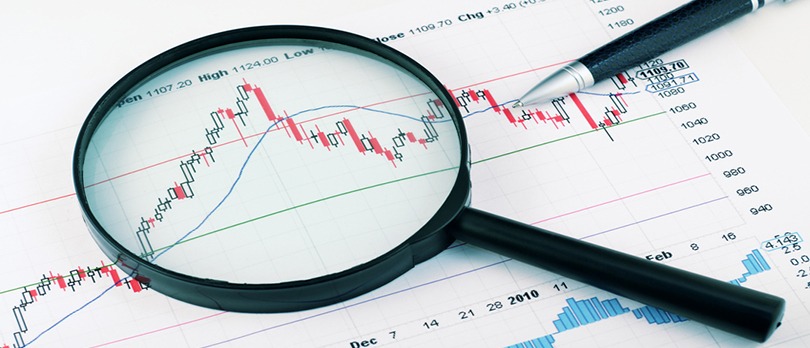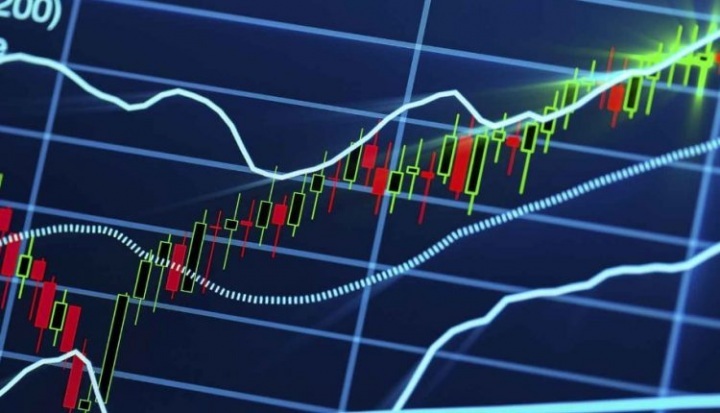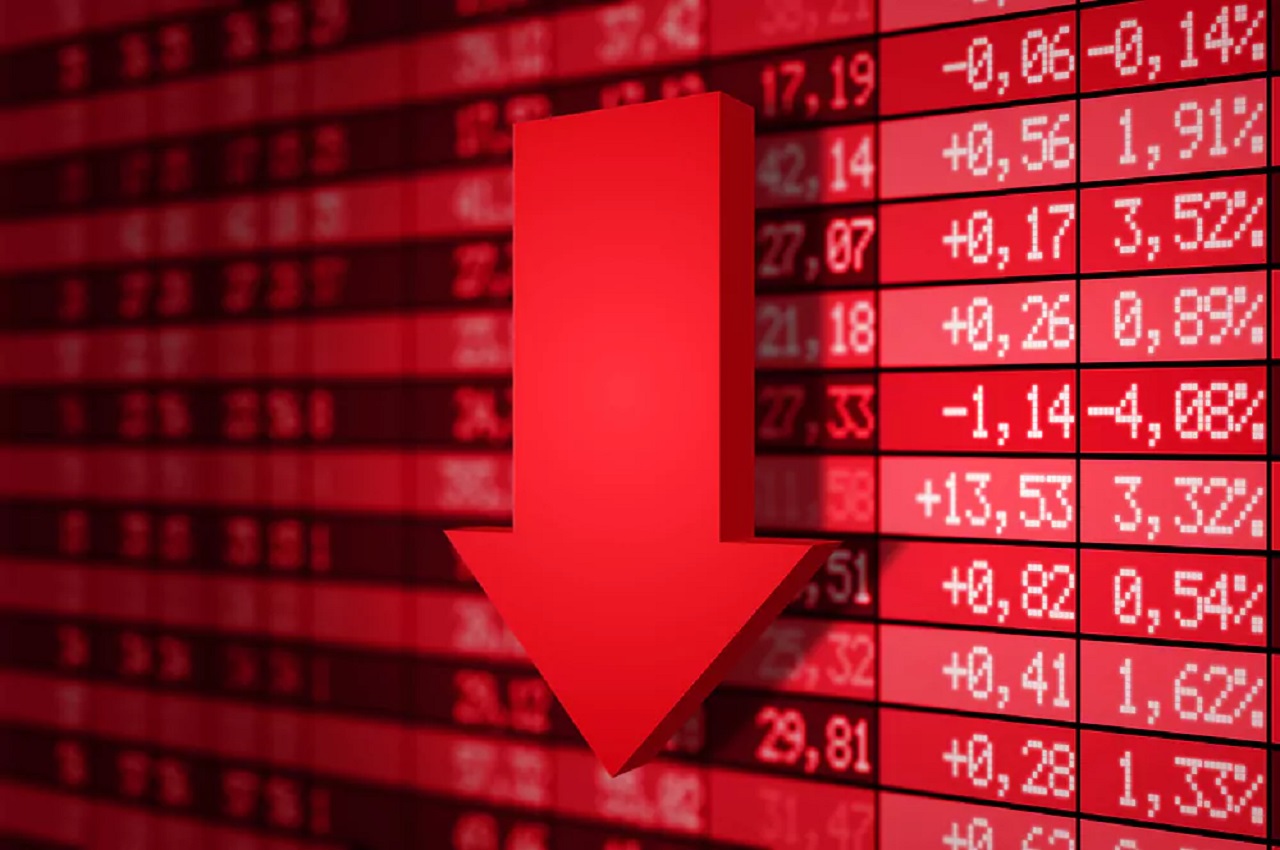Technical analysis terms refer to the methods used to interpret the price movements of financial assets. Each term corresponds to a specific action, and when expressed in analysis reports, technical data is transferred to the reader.
Technical analysis includes terms such as annual opening, Monday range, weekly opening. These terms allow traders to accurately interpret price movements while also allowing them to predict future moves. It also serves as a good tool to identify reasons for current data and possible trends in the market. Therefore, technical analysis terms are an important tool for investors and are used to understand price movements in the market and make investment decisions.
14 Frequently Used Terms in Technical Analysis
We have compiled the terms frequently used in technical analysis for you…
1st Annual Opening (YO)
Annual opening is the opening price of a financial asset on the first trading day of a given year. It is an important indicator used by many investors and technical analysts in the analysis of price movements. This term, which is “Yearly Open” in English, can also be seen on the charts with the abbreviated name “YO”.
The annual opening price is often tracked with the idea that it can provide clues about where the price might go over the next year. For example, if a stock opens above its annual opening price, investors often interpret this as a positive sign and may buy with the expectation that the stock may rise throughout the year.
However, the annual opening price should not be used as a stand-alone indicator. Investors should make their investment decisions and consider risk management, taking into account other factors such as other technical analysis tools and fundamental data.

2. Previous Annual Opening (PYO)
The previous year’s opening is the previous year’s opening price for a given financial asset. Investors can obtain information about the change in the price of the asset by calculating the difference between the opening price of the previous year and the current price. This term, which is “Previous Yearly Open” in English, can also be seen on the charts with the abbreviated name “PYO”.
For example, if a stock’s current price is $50 and the previous year’s opening price is $40, investors can calculate that the price of the stock has increased by 25 percent. This information can help investors predict future price movements and act more consciously when making investment decisions.
The previous year’s opening price is used in conjunction with other indicators in technical analysis, allowing for a more comprehensive analysis of price movements. However, it should not be used as an indicator only and should be evaluated in conjunction with other technical analysis tools.
3. Monthly Opening (MO)
The monthly opening is a month’s opening price of a particular financial asset. This indicator is used to track the changes in the asset price over the course of a month. This term, which is “Monthly Open” in English, can be seen on the charts with the abbreviated “MO”.
By calculating the difference between the opening price of a month and the current price, traders can obtain information about the change in the price of the asset. For example, if a stock’s current price is $60 and this month’s opening price is $50, investors might calculate that the price of the stock has increased by 20 percent. This information can help investors predict future price movements and act more consciously when making investment decisions.
The opening price of the month is used in conjunction with other indicators in technical analysis, allowing for a more comprehensive analysis of price movements. However, it should not be used as an indicator only and should be evaluated in conjunction with other technical analysis tools.

4. Previous Monthly Opening (PMO)
The previous month’s opening is the previous month’s opening price of a given financial asset. Investors can learn about the change in the price of the asset by calculating the difference between the opening price of the previous month and the current price. This term, which is “Previous Monthly Open” in English, can also be seen in the charts (PMO) with its abbreviated name.
For example, if a stock’s current price is $70 and the previous month’s opening price is $60, investors can calculate that the price of the stock has increased by 16.7 percent. This information can help investors do a more thorough analysis of the price movements of assets and act more consciously when making investment decisions.
The previous monthly opening price is used in conjunction with other indicators in technical analysis, allowing for a more comprehensive analysis of price movements. However, it should not be used as an indicator only and should be evaluated in conjunction with other technical analysis tools.
5. Weekly Opening (WO)
Weekly opening is a week’s opening price of a given financial asset. This indicator is used to track the changes in the asset price over the course of a week. This term, which is “Weekly Open” in English, can also be expressed with the abbreviated name “WO” in graphics.
Investors can learn about the change in the price of the asset by calculating the difference between the opening price of a week and the current price. For example, if a stock’s current price is $80 and this week’s opening price is $70, investors can calculate that the price of the stock has increased by 14.3 percent. This information can help investors predict future price movements and act more consciously when making investment decisions.
The opening price of the week is used in conjunction with other indicators in technical analysis, allowing for a more comprehensive analysis of price movements. However, it should not be used as an indicator only and should be evaluated in conjunction with other technical analysis tools.
6. Previous Weekly Opening (PWO)
The previous week’s opening is the previous week’s opening price of a given financial asset. This indicator is used to track changes in asset price over a period of more than a week. This term, which is “Previous Weekly Open” in English, can also be seen on the charts with the abbreviated name “PWO”.
Investors can learn about the change in the price of the asset by calculating the difference between the opening price of the previous week and the current price. For example, if a stock’s current price is $90 and the previous week’s opening price is $80, investors can calculate that the price of the stock has increased by 12.5 percent. This information can help investors predict future price movements by examining past price movements and act more consciously when making investment decisions.
The previous weekly opening price is used in conjunction with other indicators in technical analysis, allowing for a more comprehensive analysis of price movements. However, it should not be used as an indicator only and should be evaluated in conjunction with other technical analysis tools.

7. Daily Opening (DO)
The daily open is the initial trading price of a particular financial asset at the start of the daily trading session. This indicator is used to track the changes in the asset price within a day. This term, which is “Daily Open” in English, can be seen on the charts with the abbreviated name “DO”.
Investors can learn about the change in the price of the asset by calculating the difference between the opening price of a day and the current price. For example, if a stock’s current price is $100 and today’s opening price is $90, investors can calculate that the price of the stock has dropped 11.1 percent. This information can help traders keep track of daily price movements and act more consciously when making investment decisions.
The daily opening price is used in conjunction with other indicators in technical analysis, allowing for a more comprehensive analysis of price movements. However, it should not be used as an indicator only and should be evaluated in conjunction with other technical analysis tools.
8. Previous Daily Opening (PDO)
The previous day’s opening is the previous day’s opening price of a given financial asset. This indicator is used to track the changes in the asset price within a day. This term, which is “Previous Daily Open” in English, can also be seen on the charts with the abbreviated name “PDO”.
Investors can learn about the change in the price of the asset by calculating the difference between the opening price of the previous day and the opening price of today. For example, if today’s opening price of a stock is 110 TL and the previous day’s opening price is 100 TL, investors can calculate that the price of the stock has increased by 10%. This information can help investors predict future price movements by examining price movements relative to previous days and act more consciously when making investment decisions.
The previous daily opening price is used in conjunction with other indicators in technical analysis, allowing for a more comprehensive analysis of price movements. However, it should not be used as an indicator only and should be evaluated in conjunction with other technical analysis tools.
9. Previous Daily High (PDH)
The term previous day high refers to the highest price a financial instrument (for example, a stock, currency pair or commodity) reached in the previous trading day. The English equivalent of this term, which is abbreviated as “PDH”, is “Previous Daily High”.
This price can be used to identify support and resistance levels in technical analysis. For example, it can act as a resistance level when the price approaches the previous daily high and if the price manages to break this level, the uptrend can be considered to continue. Similarly, it can act as a support level when the price drops below the previous daily high and if the price manages to break through this level, the downtrend can be considered to continue.

10. Previous Daily Low (PDL)
The previous daily low, which is among technical analysis terms, refers to the lowest price reached by a financial instrument (for example, a stock, currency pair or commodity) in the previous trading day. The English equivalent of this term, which is also used in the abbreviated form of “PDL”, is “Previous Daily Low”.
This price can be used to identify support and resistance levels in technical analysis. For example, it can act as a support level when the price approaches the previous daily low, and if the price manages to break this level, the downtrend can be considered to continue. Similarly, it can act as a resistance level when the price breaks above the previous daily low and if the price manages to break through this level, the uptrend can be considered to continue.
11. Monday Interval (MR)
Monday range; It refers to the interval between the opening price of a financial instrument such as a stock, currency pair or commodity on Monday and the highest and lowest price that occurs on the first trading day. The abbreviation of this term, whose English equivalent is “Monday Range”, is “MR”.
The Monday range gives the first information about the price movements of a financial instrument during that week and can be used to predict the trend direction. For example, if the Monday range is wide (the difference between the high and low price is large), it is conceivable that the market may show more volatility during that week. If the Monday range is narrow (the difference between the high and low price is small), it is conceivable that the market may be less volatile during that week.
12. Monday Range High (MRH)
In technical analysis, the expression “high Monday range” means that the gap between the opening price of a financial product on Monday and the highest and lowest price that occurs on the first trading day is wide. This term, which is “Monday Range High” in English, is also used with the abbreviated name “MRH”.
A Monday range high indicates that price action may be more volatile and more volatile during that week. This may mean that traders can trade more on the financial instrument during that week.
However, a high Monday range may only be valid for a Monday and may not be a sufficient indicator on its own. A more comprehensive analysis of trend direction and price movements should be done, taking into account other technical analysis tools and price movements.

13. Monday Range Balance (MREQ)
Monday range balance, which is among technical analysis terms, means that the gap between the opening price of a financial instrument (for example, a stock, currency pair or commodity) on Monday and the highest and lowest price that occurs on the first trading day is relatively narrow and symmetrical. The English equivalent of this term, which is represented by the abbreviation “MREQ”, is “Monday Range Equilibrium”.
A Monday range balance indicates that price movements may be less volatile and less volatile during that week. This may mean that traders may trade less on the financial instrument during that week, or that price movements may be more limited.
However, the Monday range balance may be valid for only one Monday and may not be a sufficient indicator on its own. A more comprehensive analysis of trend direction and price movements should be done, taking into account other technical analysis tools and price movements.
14. Monday Range Low (MRL)
Monday range low means that the gap between the opening price of a stock, currency pair or commodity on Monday and the highest and lowest price formed on the first trading day is narrow. This popular term, denoted by the abbreviation “MRL”, is “Monday Range Low” in English.
A Monday range low indicates that price movements may be less volatile and less volatile during that week. This may mean that traders may trade less on the financial instrument during that week, or that price movements may be more limited.
However, a Monday range low may only be valid for a Monday and may not be a sufficient indicator on its own. A more comprehensive analysis of trend direction and price movements should be done, taking into account other technical analysis tools and price movements.







